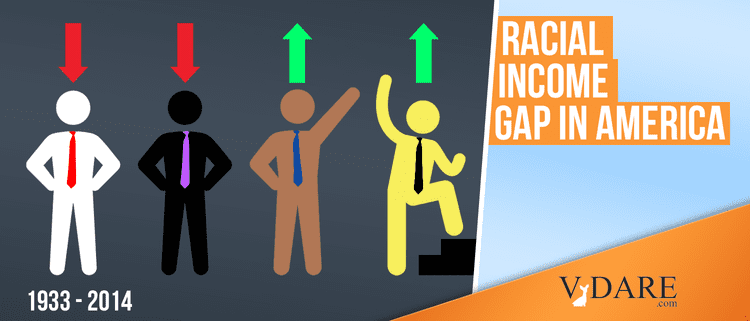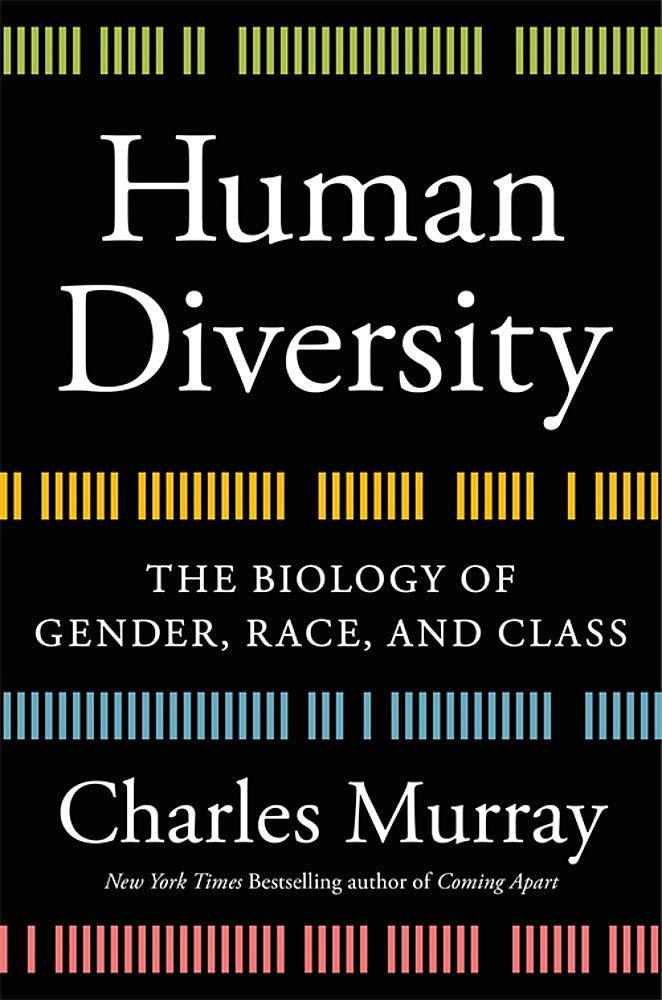Here’s a curious bit I found in the end notes of Charles Murray’s new Human Diversity:
To make his 319 pages of main text less digressive, Murray has exiled a huge amount of material to the 190 pages of fine print at the back.
I was particularly interested in his update to The Bell Curve in the endnotes from page 416 to 423. What’s happened over the past quarter of a century?
Obviously, Herrnstein and Murray’s main forecast—that the cognitive elite would continue to do better than the noncognitive elite—has come true. So has their most notorious prediction—that group differences in intelligence, such as the white-black gap, would remain largely intractable.
But what about the inside-baseball stats on IQ and income? In Human Diversity’s endnotes, Murray reports on both the 1979 National Longitudinal Study of Youth cohort of over 10,000 late baby boomers and the 1997 NLSY study of a similar number of kids born in the early 1980s.
When the incomes of the 1979 NLSY cohort were evaluated in 1993 when they were 30 to 35 years old, blacks and whites with the same IQs earned the same amount of money. Hispanics, however, earned 6 percent less. Asians were so few they weren’t broken out separately back then.
When the subsequent 1997 NLSY cohort was evaluated in 2014, however, immigrant groups were doing better than whites and blacks. Latinos outearned whites with similar IQs by 2 percent, and Asians outearned equally smart whites by a stunning 57 percent.
Between these two cohorts a couple of decades apart, white incomes at a 120 IQ fell by 4 percent and black incomes by a shocking 19 percent. Blacks with 120 IQs in 2014 made only 84 percent as much as whites with similar intellects, and merely 54 percent as much as equally high-IQ Asians.
These are curious findings, and Murray doesn’t comment much upon them. I’d point out that the sample sizes, especially of blacks at 120 IQ, are not large and the methodological challenges of comparing two separate (but similar) studies are likely complex.
Still, if this trend is real, it could help explain worsening black-white relationships during the current Great Awokening. Perhaps between 1993 and 2014, the earnings of both blacks and whites got squeezed hard by immigrants, and the two old American groups are taking out their financial resentments upon each other rather than upon the newcomers.




 To make his 319 pages of main text less digressive, Murray has exiled a huge amount of material to the 190 pages of fine print at the back.
To make his 319 pages of main text less digressive, Murray has exiled a huge amount of material to the 190 pages of fine print at the back.








